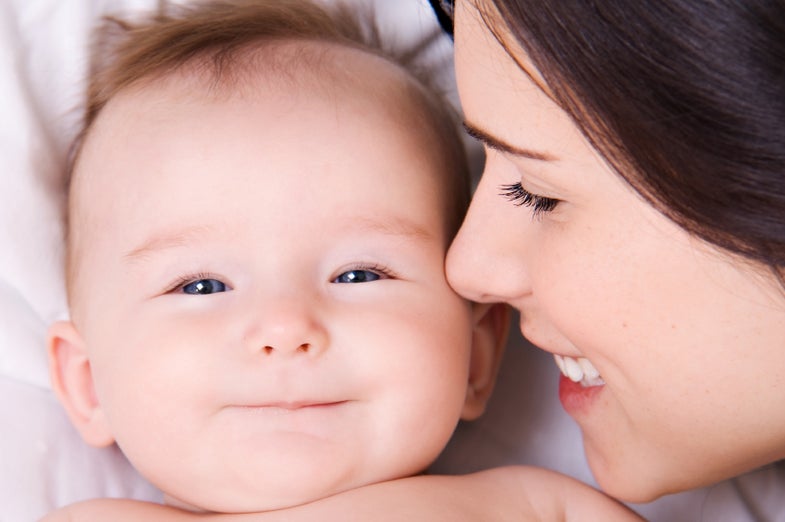Mom Lights Up When Her Baby Smiles
Brain scans show that for new mothers, a happy baby is like a drug.

Another everyday emotion has been verified by the neuroimaging technique fMRI—this time, the warm and fuzzy feeling moms get when they gaze at their smiling baby.
Pediatric researchers from Houston’s Baylor College of Medicine asked 28 first-time mothers to view photographs of smiling, crying, and neutral-expression infants while lying motionless in a functional magnetic resonance imaging scanner. The technique measures increases of oxygenated blood in the brain, a sign of heightened neural activity. When the mothers reached the photo of their own happy child, brain regions associated with reward “lit up.”
“These are areas that have been activated in other experiments associated with drug addiction,” said Lane Strathearn, the lead on the study. “It may be that seeing your own baby’s smiling face is like a ‘natural high’.” Unshockingly, a mother’s own baby didn’t set off big reward bells when sad or neutral-faced, nor did other peoples’ babies.
The activated brain areas are known to have high concentrations of neurons that produce and respond to dopamine, the brain’s “pleasure chemical”. These regions also help turn rewarding thoughts into action. “Some mothers said that they literally had to restrain themselves from reaching out to their baby while in the scanner,” said Strathearn. “That’s how strong the urge to act was.”
Strathearn, with a laugh, concedes the data’s “no-duh” tinge. But the work provides a baseline of the neural basis of “normal” attachment between mothers and their kids. Strathearn, a developmental pediatrician at Baylor College of Medicine and Texas Children’s Hospital, investigates cases of child abuse and neglect. “Obviously these [reward] pathways aren’t in place in all mothers,” he said. “First we need to know how the system normally operates, and the next step is looking at what happens when these systems aren’t functioning properly.” To that end, he and his colleagues are now comparing fMRI scans of mothers who are at high risk for abusing or neglecting their child with those of the baseline study to see if that warm and fuzzy feeling, scientifically speaking, is absent or diminished.
Strathearn and team published Monday in the journal Pediatrics.